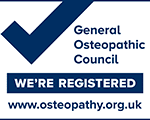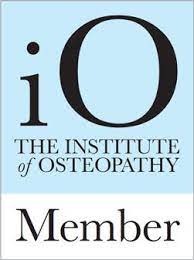Prioritising your back health in FIVE easy steps this Chiropractic Awareness Week
Back pain is more common than you’d think, with recent data showing that 80% of the nation will experience back pain at some point in their lifetime[1]. This Chiropractic Awareness Week (4-10 April 2022), we’re encouraging Brits to take back their back health.
Did you know there’s currently 10 million people in the UK living with back pain?[2] What’s more, research from the British Chiropractic Association found that cases of back pain rose by a third during the pandemic and resulting lockdowns[3]. Despite this increase, only 10% of people experiencing symptoms sought support from a GP or chiropractor, with 46% of people not taking any steps at all to tackle their back pain, indicating a large portion of the population is still living with daily symptoms into 2022.[4]
Whilst these numbers may seem high, by actively taking simple steps as part of your daily routine, evidence shows that symptoms and the risk of developing a more challenging musculoskeletal condition can be reduced.
Here are our five top tips from that anyone can take to support their back health:
- Start the day right and keep on moving: Physical activity can be beneficial for managing back pain, so aim to incorporate at least 30 minutes of movement into your day. It’s important that if this is of a moderate to high intensity, you warm up and down properly to get your body ready to move. If a previous injury is causing you pain, adapt your exercise or seek some advice. Activities such as swimming, walking or yoga can be less demanding on your body, while keeping you mobile!
- Take a break: If you sit for long periods of time as part of your job, ensure you stand up and move around every 30 minutes – particularly so for hybrid work set ups and working from home if you don’t have ergonomic office equipment.
- Lifting and carrying: If you’re taking on DIY or spring-cleaning projects this Easter, remember to bend from the knees, not the waist when lifting heavy items. Face in the direction of movement and take your time. Hold the object as close to your body as possible, and where you can avoid carrying objects which are too heavy to manage alone, ask for help or use the necessary equipment.
- Sleep comfortably: The Sleep Council recommends buying a new mattress at least every seven years. Mattresses lose their support over time, so if you can feel the springs through your mattress, or the mattress is no longer level, your mattress is no longer providing the support you need. Everyone has different support requirements, so when purchasing your mattress ensure it is supportive for you. If you share a bed and require different mattress types, consider two single mattresses which are designed to be joined together, to ensure you both get the support you need.
- Seek out support: If your symptoms of back or joint pain last more than two weeks, or prevent you from carrying out your daily routines, see a chiropractor or GP for advice. You can find a registered chiropractor on our ‘Find a Chiropractor’ page.
Myth Busting
This Chiropractic Awareness Week, we also wanted to answer a few of the most common myths and misconceptions around chiropractic treatment:
1. “Chiropractic is just cracking backs” = MYTH – In the UK, chiropractic is a regulated profession and chiropractors provide patients with a whole wealth of treatments, spinal adjustment being just one. There’s no one-fit approach and every patient’s plan is treated individually – many will never hear the crack or popping sounds. The crack or popping sound that’s produced from a spinal manipulation comes from a small pocket of air being released between the joints. It’s generated by something called a cavitation.
2. “Chiropractors are massage therapists with a different name” = MYTH – Chiropractors are extensively trained to diagnose, treat, manage, and prevent disorders of the musculoskeletal system (bones, joints, and muscles), as well as the effects these disorders can have on the nervous system and general health.
3. “Chiropractic leads to a dependence on treatment, rather than solving the problem” = MYTH – The goal of a chiropractor is always to create a bespoke work and care plan for each patient which aims to tackle the problem of their pain and solve it in the safest and most efficient way possible.
Feeling physically well positively impacts every aspect of how we live our day-to-day life, so maintaining good back health is extremely important. In partnership with the BCA, we want to raise awareness and show that anyone can be proactive about their back health this Chiropractic Awareness Week!
Easy changes can make a significant difference, but if your pain doesn’t reduce or is prolonged, you should always see a health professional for further guidance.
[1] British Chiropractic Association One Poll consumer survey, 2021
[2] The state of musculoskeletal health in the UK
[3] British Chiropractic Association One Poll consumer survey, 2021
[4] British Chiropractic Association One Poll consumer survey, 2020












